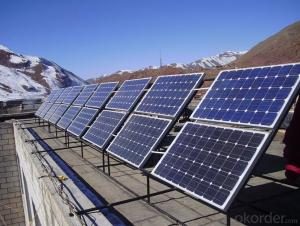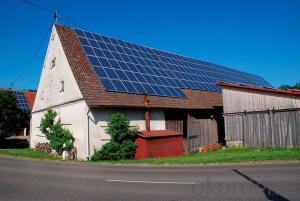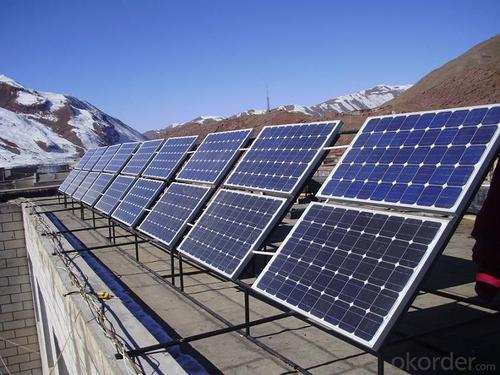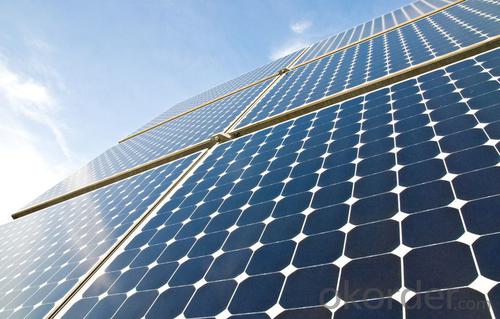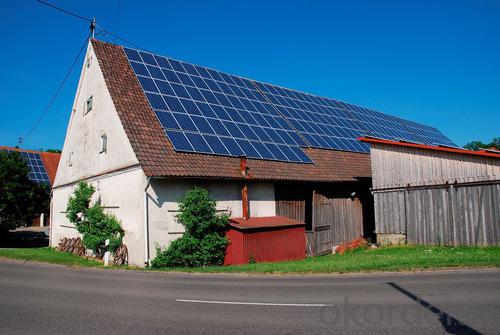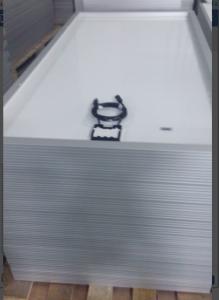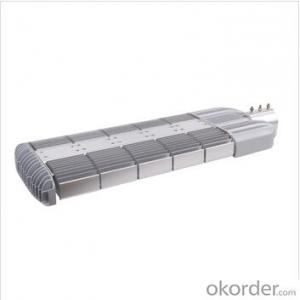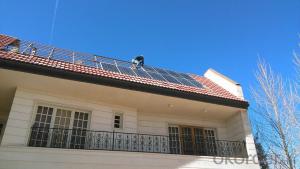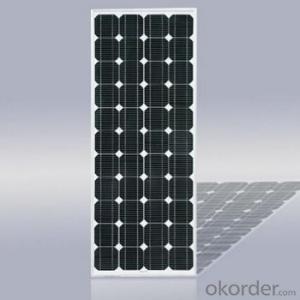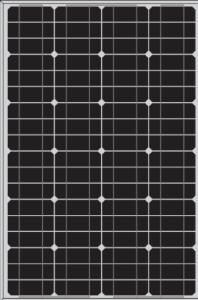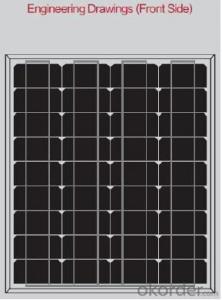CNBM Solar Monocrystalline 125mm Series (90W—100W) Solar Panels in The Winter
- Loading Port:
- China main port
- Payment Terms:
- TT OR LC
- Min Order Qty:
- 100000 watt
- Supply Capability:
- 10000000 watt/month
OKorder Service Pledge
OKorder Financial Service
You Might Also Like
About us
CNBM International Corp, established in 2004, is the business entity for trade and logistic of CNBM Group.With the advantages in Cement, Composite Materials, New Building Materials and Engineering, CNBM mainly concentrate on coal, steel and construction equipments and give priority to solar and wind energy development.CNBM International is highly recognized by its business partners and clients all over the world and has established good business relationship with the customers in over 120 countries and regions all over the world.
Process is as follows:
1, the battery test
2, positive Welding - Inspection –
3, on the back of cascading - Inspection –
4, laying (glass cleaning, material cutting, glass pre-processing, laying) –
5, laminating –
6, to flash ( to the side, cleaning) –
7, fitted border (glue, loading angle keys, punching, install box, scrub I glue) –
8, the welding junction box –
9, high-pressure test –
10, component testing -- -
11 appearance inspection, packaging and storage;

Data sheet
| Characteristics | |
| Max Power Voltage Vmp (V) | 17.4V-17.6-17.8 |
| Max Power Current Imp (A) | 5.33A-5.62A-5.79A |
| Open Circuit Voltage Voc (V) | 22.2V-22.3V-22.4V |
| Short Circuit Current Isc (A) | 5.17A-5.40A-5.62A |
| Max Power Pm (W) | 90W-95W-100W |
| Temperature Coefficient of Cells | |
| NOCT | 47℃±2℃ |
| Temperature Coefficients of Isc (%/℃) | 0.06% |
| Temperature Coefficients of Voc (%/℃) | -0.32% |
| Temperature Coefficients of Pmp (%/℃) | -0.45% |
| Mechanical Data | |
| Type of Cells (mm) | Mono125*125 |
| Dimension | 1190×550×30mm |
| Weight | 8kg |
| NO.of Cells and Connections | 4×9=36 |
| Limits | |
| Operating Temperature | –45°C to +80°C |
| Storage Temperature | –45°C to +80°C |
| Max System Voltage | 700V |
FAQ:
Q1: Why buy Materials & Equipment from OKorder.com?
A: All products offered byOKorder.com are carefully selected from China's most reliable manufacturing enterprises. Through its ISO certifications, OKorder.com adheres to the highest standards and a commitment to supply chain safety and customer satisfaction.
Q2: What is a solar PV module?
A: A solar PV module consists of many solar cells that are connected together (typically in series) and packaged in a frame (typically made of aluminum).
Q3: What are the advantages and disadvantages of monocrystalline solar PV modules?
A: Monocrystalline solar PV modules are the most efficient type of solar PV modules, with the exception of CdTe thin film solar PV modules. As a result, monocrystalline solar PV modules are more expensive when compared to almost all other types of solar PV modules.
Q4: What is the typical service life of a solar PV module?
A: The typical life of a PV module is 25 years. However, superior quality PV modules boast service lives up to 35-40 years (electrical generating capacity is often reduced, however by that point).
- Q: solar energy
- Himin solar pay more attention to the products quality, we would like to talk more about the quality characteristic of solar module,The credibility of the supplier and the quality of raw material are very important. Himin choose top material to make our solar panels.
- Q: I am moving to Hawaii and the house we are living in has independent electricity. (solar panels and gas powered generators.)
- You would have some kind of thing that captures the kinetic energy and transfers it to electrical energy so it would run, but, yeah.
- Q: my solar car works when using the Battery but when there is sunlight i connect the wires to the solar panel and it does not work...................HELP
- leave the car in the sun for a few hours to see if it charges. if not, the panel is defective. get it replaced b4 the science fair
- Q: I just moved into somewhere with solar panels but don't really understand them...all I know is that they heat the water.Do I still have to turn the hot water on with the solar panels or do they heat it automatically or do they store the energy until I turn on the hot water?!
- Custom solar-heating systems are unique. Does yours have a circulating pump? Does it have a storage tank? Is the fluid that goes to the panels separated from the household water and transfers heat through a heat-exchanger radiator, and the fluid has antifreeze in it? If it does, is the antifreeze of the variety that won't poison your family if there is a leak? Does your system have a thermostat-controlled pump that turns on when the water in the panels are hot? Does it have a limit-thermostat to turn off the pump when water in the storage tank is hot? There are many more variations to operation of solar-heating panels. Find out who designed it or who knows how to operate it and ask them.
- Q: Plz also label the price for the panel. I want a small panel but can produce a sufficent amount of energy. thank you :)
- This one.
- Q: I would like to know how do you build a solar panel?
- At first, you will need about one square foot of thin copper plate, two alligator clips and short leads of wire, a wide mouth glass jar, tap water and salt. Cheers,
- Q: thinking of getting a portable solar panel laptop charger...may be a stupid question but may be a very intelligent one as well ;)
- First of all solar panels increase the mass of the plane and afeect its aerodynamicity. U cant use them at night. U cant use them when the whether is cloudy or its raining. To obtain the power required lift a plane it would need lots of solar panels which would make the flight more expensive. Why would people go on a more expensive ride when they can get a cheaper one.
- Q: Can solar panels be installed on a multi-story building?
- Yes, solar panels can be installed on a multi-story building.
- Q: I have seen quite a few different websites that talk about building your own solar panels for around $200. I wanted to know if anyone has had any experience with this before I decide to try it myself. It would be very helpful to know what I can expect from such an inexpensive setup; what kind of electronics or appliances would I be able to power. Realistically what can I expect from a $200 setup, and what would I need to power say a whole bedroom (clock, regular sized TV, PC, ext.).
- I okorder / You will also need to purchase at least 2 deep cycle 6 volt batteries and a 000 watt inverter. Depending on your usage you might need to add more batteries and or another panel to you system. Hope this helps.
- Q: Can solar panels be installed in extreme temperatures?
- Yes, solar panels can be installed in extreme temperatures. Solar panels are designed to withstand a wide range of temperature conditions, including both hot and cold environments. However, extreme temperature conditions may affect the efficiency of the panels, reducing their overall performance slightly.
Send your message to us
CNBM Solar Monocrystalline 125mm Series (90W—100W) Solar Panels in The Winter
- Loading Port:
- China main port
- Payment Terms:
- TT OR LC
- Min Order Qty:
- 100000 watt
- Supply Capability:
- 10000000 watt/month
OKorder Service Pledge
OKorder Financial Service
Similar products
Hot products
Hot Searches
Related keywords
